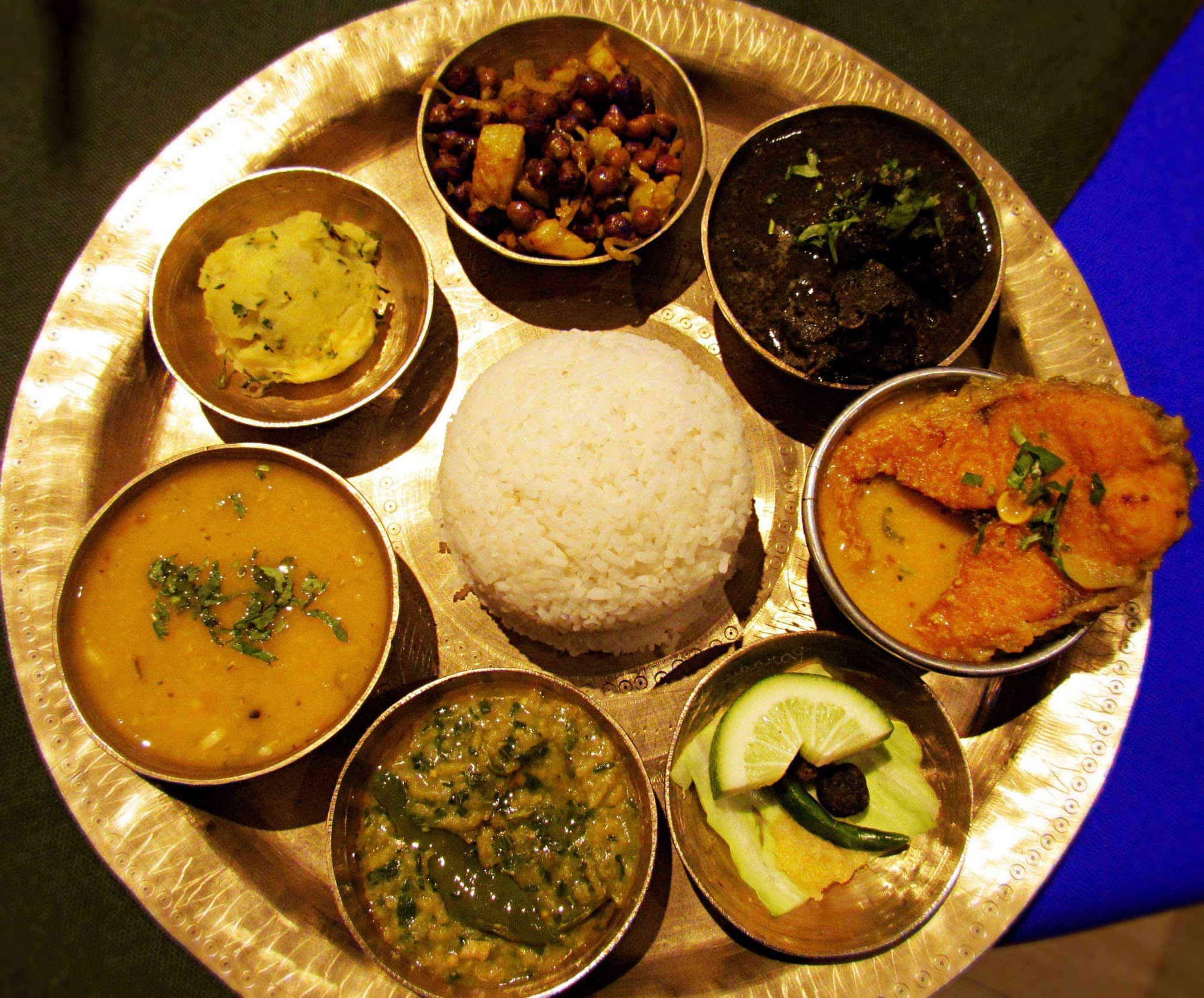From Maasor Aanja to Torkajri: An Authentic Assamese Food Adventure
By the time we finally arrived in Shillong from Kanchanjuri, I was both exhausted and ravenous. The six-hour journey to the “abode of clouds” had taken its toll, and I could feel the fatigue setting in. Fortunately, I wasn’t alone on this trip—I had a few colleagues with me, fellow travellers who had also come to North East India to attend a Peace Convention. We had all agreed that a food stop was long overdue, and as we passed through the serene countryside, the promise of tasting authentic Assamese flavours drew us to a small local restaurant along the way.
We decided to take a break and immerse ourselves in the local cuisine, curious to sample the rich and unique flavours of Assam. To make the most of it, we unanimously agreed on ordering an Assamese Thali—a traditional platter that promised a medley of dishes showcasing the region’s culinary heritage. As soon as we entered the restaurant, we noticed how different the setup was. We were invited to sit around a “Bor Peera,” a short, traditional Assamese table that was about the size of a seating mat, instantly giving the meal a more intimate, grounded feel.

Once seated, we were greeted with small bites that soon began arriving one by one. The simplicity of the setting was juxtaposed by the complexity of flavours that awaited us. The Thali was a delightful assortment of regional specialities, each dish reflecting Assam’s deep connection to nature and tradition. The subtle spices, the earthy textures, and the vibrant colours of the food were nothing short of mesmerising. Every bite felt like a journey through Assam’s culture, from the tangy Outenga to the tender fish curry, and the rich flavours of mustard greens and lentils.
It wasn’t just a meal—it was an experience. Sitting there, on the Bor Peera, surrounded by the warmth of my colleagues and the hospitality of the locals, I felt a deep sense of connection to this land. This was my fourth experience indulging in an Assamese Thali, and by now, I had developed a deep fondness for the region’s flavours—especially the delicate mustard fish, which had become a personal favourite over previous meals. As we settled at the table, I couldn’t help but admire the beautiful presentation. The traditional Assamese Thali was not just about the food; it was an experience in itself.
The plate, known as a “Ka(n)h”—a local alloy typical to Assam—gleamed softly, adding a rustic charm to the table setting. Alongside it was a “Ghoti,” a personalized water jug, and a “Gilas” (glass) crafted from either Pitol or Ka(n)h. Everything felt carefully curated, a nod to Assam’s deep-rooted traditions and love for its heritage.
Soon, the food followed, and what a feast it was! Our Thali was a generous spread of Assamese delights. There was **Bhaat** (steamed rice), accompanied by a hearty **Daali** (dal), and the freshness of **Haak Bhaaji** (stir-fried greens). The **Torkajri** (a traditional vegetable curry) added warmth, while the rich, flavorful **Maasor Aanja** (fish curry) stood out as the star of the meal. For meat lovers, the **Mandator Jol** (meat in gravy) was a treat—its deep flavours mingled perfectly with the rice. The meal also included **Pitika**, a simple yet flavourful mash, and **Asaar**, the famous Assamese pickle, offering a tangy contrast to the other dishes.
For the next thirty minutes, the table was enveloped in soft silence, as we all became fully absorbed in savouring each bite. The complexity of flavours, from the tanginess of the pickles to the warmth of the mustard-infused fish, made it a truly memorable meal. Each dish had its own unique charm, and whether you prefer vegetarian or non-vegetarian fare, an Assamese Thali offers a feast for the senses. I can’t recommend it enough to anyone visiting North East India for the first time—it’s an authentic way to connect with the local culture through food.
After that satisfying meal, we resumed our journey, feeling content and energized. Our driver, an elderly man with a love for storytelling, continued to regale us with tales about Shillong and the surrounding regions. His stories, punctuated by the rhythmic hum of the road, added an extra layer of richness to the experience. Later that evening, after we reached our hotel, I found it bustling with students and athletes preparing for their departure to Guwahati, where the Asian Games were to be held. The atmosphere was lively, but by dinner time, I craved something simpler.
I opted for some hot, steaming Assamese **momos**—soft, pillowy dumplings filled with savoury goodness—paired with a plate of fried rice and barbecued vegetables. It was the perfect way to end the day, a lighter yet flavorful meal that complemented the heavier lunch beautifully. All in all, my journey through the flavours of Assam had been nothing short of delightful. Every meal offered something new, a reminder of the region’s culinary richness and diversity.



